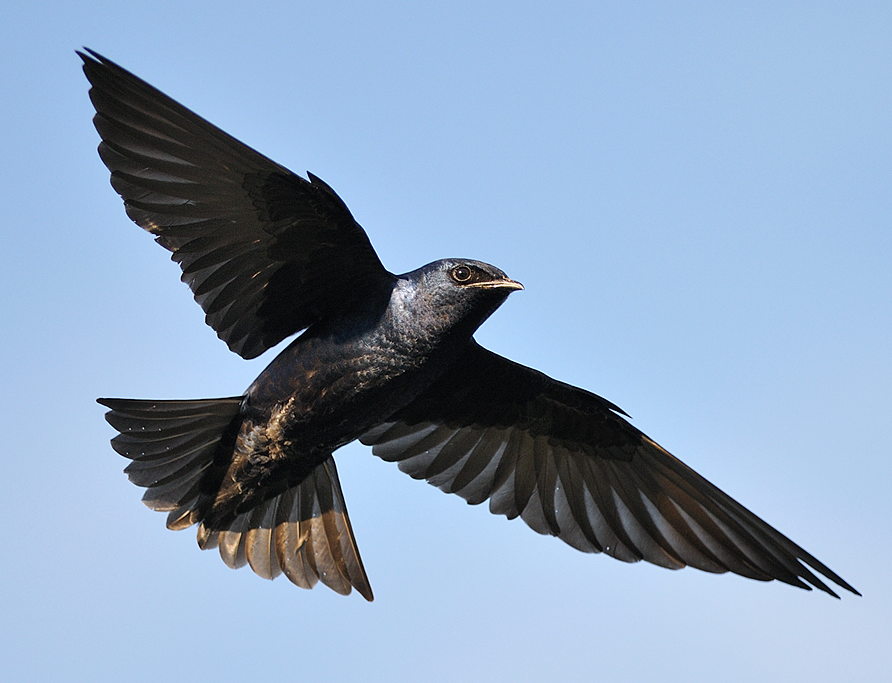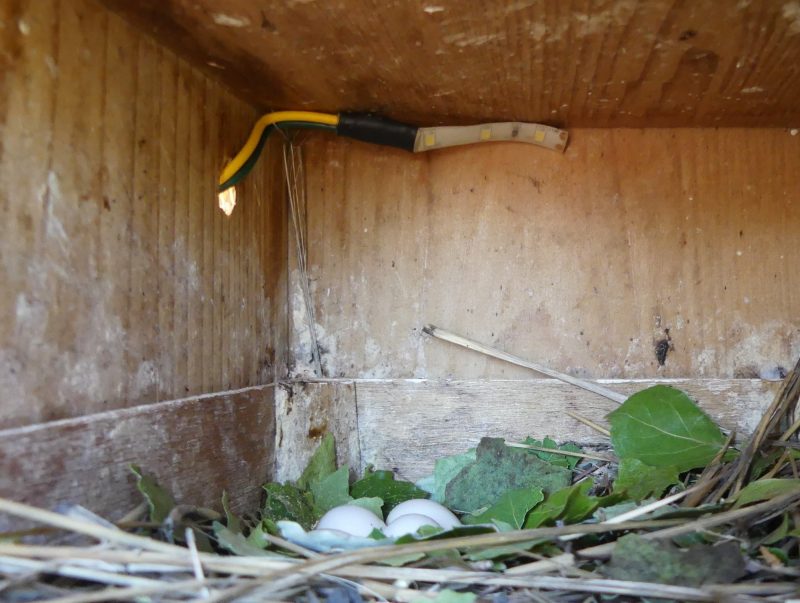
A purple martin in flight // Photo: Kevin Fraser
One flew over the cuckoo clock
UM team finds way to alter migration timing of birds that may help them adjust to climate change
The Avian Behaviour and Conservation Lab in the University of Manitoba’s Faculty of Science is once again publishing another groundbreaking paper on migratory birds and climate change. This time, they provide some hopeful news in the wake of a surprising discovery.
PhD student Saeedeh Bani Assadi, working with biological sciences professor Kevin Fraser, found that wild purple martins (Progne subis) can indeed be coaxed into changing the timing of their migration. Such behaviour is often considered an ingrained instinct—one that could take evolution decades to adjust. So such plasticity of migration timing, to use the ornithological lingo, surprised the team.
“We found that migration timing can be flexible to the daylength birds experience while still in the nest. This helps us to see the potential for an assisted evolution approach to solving bird’s timing problems, where we may be able to intervene to help birds keep up with the pace of climate change,” says Bani Assadi.
With 3 billion landbirds lost in North America since the 1960s, the researchers note, we need to consider many potential solutions. This includes considering ways that we may be able to help birds keep up with the pace of climate change.
“These results help us to see the potential for an assisted evolution approach to help solve the mismatches we see between bird timing and their new environment with climate change,” Fraser says.
Why do species such as P. subis need to change their timing so quickly? Because climate change means earlier springs are now more common, and birds overwintering 9,000 kilometers away are unaware of these changes, so when they arrive back in Canada, sometimes a week “late”, the insects they depend on may have already come and gone and the birds, already stressed, miss out on the needed bounty. Bird populations suffer. The ecology is upset.
To mollify this situation, Fraser’s lab has long wondered if they could jump-start an itinerary change by providing alternative light cues to nestling birds. And the work of Bani Assadi, as reported in the latest issue of the Proceedings of the Royal Society b, suggests they can.
In their paper, “Experimental manipulation of photoperiod influences migration timing in a wild, long-distance migratory songbird,” they describe how manipulating light levels (effectively changing daylength cues) in the nest boxes of nestling purple martins, instilled different migration timing in the new generation when compared to control subjects. The manipulated group departed for fall migration later than controls (that had natural, ambient daylength only) demonstrating that bird timing is flexible in the wild with birds still in the nest.
The impact of this finding is that this opens a potential avenue to instill even more adaptive timing in birds in the future through captive-release programs. Such assisted evolution techniques could be a necessity in the near future.
“Next, we need to determine whether timing developed in the nest ‘sticks’ as birds age or if it continues to change across a bird’s lifetime,” Fraser says.
Research at the University of Manitoba is partially supported by funding from the Government of Canada Research Support Fund.







